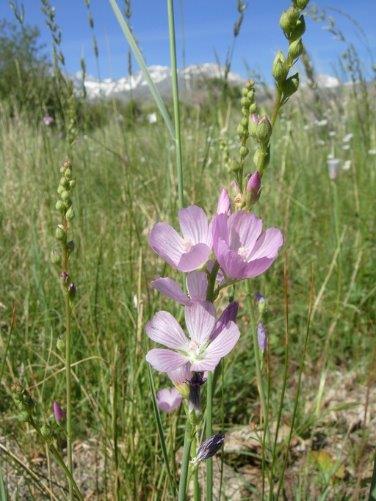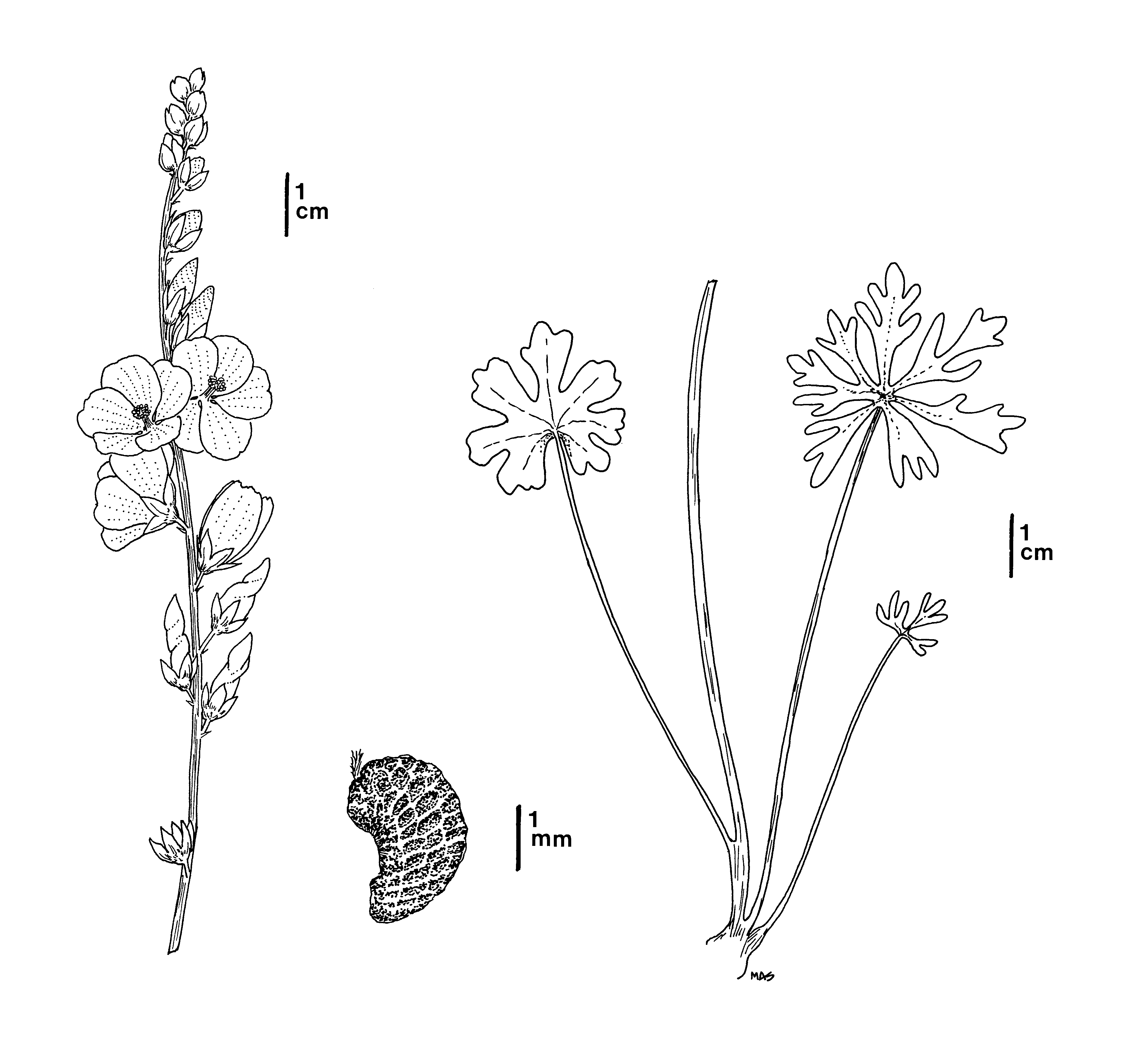Sidalcea covillei
 Sidalcea covillei/ Photo © James Andre.
Sidalcea covillei/ Photo © James Andre.
 Sidalcea covillei. CDFW illustration by Mary Ann Showers. (Click to enlarge)
Sidalcea covillei. CDFW illustration by Mary Ann Showers. (Click to enlarge)
Owens Valley checkerbloom is a California endangered plant species, which means that killing or possessing the plant is prohibited by the California Endangered Species Act (CESA). Owens Valley checkerbloom is a perennial herb in the mallow family (Malvaceae) that only grows in Owens Valley in Inyo County, California. It has small, pink-lavender flowers that bloom from May to June. Owens Valley checkerbloom has a hairy stem and fleshy roots, including a main taproot. It grows within the Owens River drainage in alkali meadows and spring plant communities that have sandy loam soils with alkaline crusts. Owens Valley Checkerbloom is often seen growing alongside saltgrass (Distichlis spicata), alkali sacaton (Sporobolus airoides) and clustered field sedge (Carex praegracilis).
Owens Valley checkerbloom has a limited distribution of 42 occurrences along about 75 miles of the Owens River drainage according the California Natural Diversity Database. These occurrences are threatened by lowering water tables and grazing. Unsustainable extraction of water in the Owens River Valley has lowered the water table, allowing noxious weeds to thrive while less water is available for Owens Valley checkerbloom and other native plants. Various studies show that vegetative cover is responsive to the groundwater depth and that lower groundwater can aide in recruitment success of plants that have not been historically present. This can cause unprecedented competition, and ultimately the decline of rare species such as Owens Valley checkerbloom.
In 1994, a preliminary biological monitoring report for Sidalcea covillei complied by the Bureau for Land Management, the California Department of Fish and Wildlife, and The Nature Conservancy presented results from a study of the long-term survivorship of Owens Valley checkerbloom seedlings that were reintroduced into sites where seeds were collected. Their results concluded that Owens Valley checkerbloom can be propagated and transplanted successfully. These results give hope for success in projects like the Conservation Area Management Project, which includes Owens Valley checkerbloom and was funded by the U.S. Department of Fish and Wildlife, who awarded $200,000 to the Bishop Paiute Tribe in 2011. Additional financial support for propagation and transplanting projects will be needed to maintain and increase population numbers of Owens Valley checkerbloom. However, without efforts in water conservation and sustainable water allocation, many species in the Owens River drainage that depend on groundwater will continue to be threatened.
CDFW may issue permits for Owens Valley checkerbloom pursuant to CESA, and you can learn more about California laws protecting Owens Valley checkerbloom and other California native plants on the CDFW website. Owens Valley checkerbloom occurs in CDFW's Inland Deserts Region.
Updated 4/19/2017